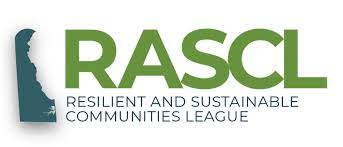Image courtesy of the Chesapeake Bay Program
The Mispillion River and Cedar Creeks drain to the Delaware Bay in Kent and Sussex County Delaware. The vast marshes connecting them are part of an international flyway for migrating birds and a horseshoe crab sanctuary, which brings tourist dollars to the area and secures land value for residents. In addition, the marshes act as a “coastal stronghold” for managing the effects of sea level rise, including reducing property damage from flooding. Together, these resources produce multiple benefits to the state of Delaware, and the towns of Milford and Slaughter Beach. “The Mispillion River runs right through our city, Milford Mayor Archie Campbell said. “It was always an important part of our downtown and maritime heritage, but now we have a better understanding of its value and how it contributes to our quality of life.”
The University of Maryland’s Environmental Finance Center (EFC) prepared two recent studies for the Mispillion River Watershed. The first “Community-Centered Natural Resource Benefits: Mispillion Watershed, Delaware” documents how the watershed’s natural resources generate millions of dollars in value related to recreational and leisure activities alone. The second “Ecotourism and Resilience Investment Strategy for the Mispillion and Cedar Creek Watersheds'' builds on the economic value of the resources and details how ecotourism and other nature-based investments can sustain and enhance benefits to the region for generations to come. The project included branding and marketing that characterizes the Mispillion River as “Delaware’s Hidden River” awaiting to be discovered and celebrates Cedar Creek as “naturally pristine.” Milford and Slaughter Beach each recently passed municipal resolutions endorsing this effort.
The reports were prepared in concert with funding and collaboration with the Waterways Infrastructure and Investment Network (WIIN). WINN is comprised of the Delaware Resilient and Sustainable Communities League, Delaware Sea Grant, the University of Maryland EFC, and the Partnership for the Delaware Estuary. With the City of Milford, the Town of Slaughter Beach, and The Pew Charitable Trusts, WIIN won a $220K grant from NFWF National Coastal Resilience Fund. Other coalition partners included Southern Delaware Tourism, the Nature Conservancy, Delaware Nature Society, Delaware Department of Natural Resources and Environmental Control, Sussex County, Kent County, I.G. Burton, David Burton, and Tony Pratt. Ben Muldrow of Arnett, Muldrow & Associates developed the branding and marketing strategy.
“I like that this plan recognizes that the natural resources in Slaughter Beach are too important not to protect,” Slaughter Beach Mayor Bob Wood said. “The WIIN strategy is about balancing economic opportunity with conservation and finding ways to be more resilient so that everyone gains. This effort is a game changer for us.”
More information, including the Economic Assessment and Investment Strategy are available at www.derascl.org/wiin.
*Please contact Jelena Dakovic at jdakovic@umd.edu for an accessible version of the report.
Partner



Sponsor

